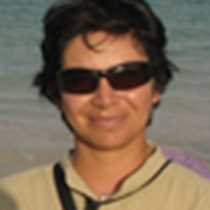Genovesa Island
In the early hours of the day we arrived at Genovesa Island and anchored inside a caldera. This caldera is known as Darwin’s Bay and has very steep cliffs with typical columnar basalt covered by layers of lava flows. This is no longer an active volcano and apparently had little volcanic activity in its past. We are in the northeastern-most island in the archipelago. This is the home of several species of land and seabirds as well as Galápagos fur seals and Galápagos sea lions.
We began our day with a pre-breakfast kayak outing, which let us explore the coast at our own pace and observe the wildlife a bit closer. After this activity we returned to the ship for breakfast and then headed ashore for a walk that took us to the nesting grounds of swallow-tailed gulls, Great frigate birds, red-footed boobies, and Nazca boobies. We also encounter Yellow-crowned night herons hunting, while others were sleeping in crevices.
After our walk we went snorkeling along the cliffs of Darwin Bay and in addition to the fish we saw, there were also a few hammerhead sharks that were surprisingly big. We love finding these animals as they are not that common anymore and the ones we swim with are not dangerous but rather fascinating.
This afternoon everybody went on our last walk on the second trail that this island has; that is Prince Phillip’s Steps. We walked from the interior of the island to the coast and we found the top predator of this island: the short-eared owl. As this bird has no other predator to compete with, it can be seen during the daytime as well as nighttime. We found several chicks of Nazca boobies with their white downy feathers, most of them waiting for one or both their parents to feed them. The day was ending and we had to return as the sun disappeared behind the horizon. There was a lot of activity as many birds were returning to their island to sleep, and we headed to our ship to share the experiences of the day on Genovesa Island.




